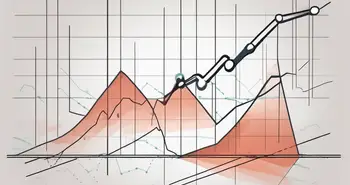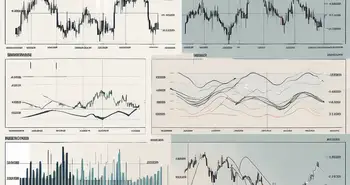Understanding Your Risk Tolerance: A Comprehensive Guide

As an expert in financial planning, I understand the importance of understanding your risk tolerance when it comes to making investment decisions. In this comprehensive guide, I will break down the concept of risk tolerance and its impact on your financial future. By the end of this article, you will have the tools and knowledge to assess your risk tolerance and make informed investment choices.
Defining Risk Tolerance
Before we delve into the depths of risk tolerance, let's start with a clear definition. Risk tolerance refers to your ability and willingness to take on financial risks in pursuit of potential rewards. It is influenced by a variety of factors, including your personality, financial goals, and market conditions.
For example, if you have a high risk tolerance, you may feel comfortable investing in volatile markets with the potential for higher returns. On the other hand, if you have a low risk tolerance, you may prefer more stable investments with lower potential returns.
The Role of Risk Tolerance in Financial Planning
Risk tolerance plays a crucial role in financial planning. By understanding your risk tolerance, you can create a personalized investment strategy that aligns with your goals and comfort level. It helps you strike a balance between the desire for growth and the need to protect your assets.
For instance, if you have a higher risk tolerance, you may allocate a larger portion of your portfolio to high-growth stocks or riskier assets. Conversely, if you have a lower risk tolerance, you may lean towards more conservative investments, such as bonds or index funds.
Psychological Factors Influencing Risk Tolerance
Psychological factors also influence your risk tolerance. Our individual attitudes towards risk are shaped by various factors, such as our past experiences, beliefs, and emotions. Understanding these psychological influences can help you make more rational investment decisions.
For instance, if you've experienced significant losses in the past, you may have a more conservative risk tolerance due to the fear of repeating those losses. On the other hand, if you have a positive attitude towards risk and are willing to embrace uncertainty, you may have a higher risk tolerance.
Assessing Your Risk Tolerance
Now that we've covered the fundamentals, let's discuss how to assess your risk tolerance accurately. There are several methods you can use to evaluate your risk tolerance, both self-evaluation techniques and professional assessments.
Self-Evaluation Techniques for Risk Tolerance
Self-evaluation techniques involve asking yourself a series of questions to gauge your risk tolerance. Consider factors such as your investment goals, time horizon, and financial resilience. Be honest with yourself about how comfortable you are with potential losses and fluctuations in your portfolio.
Additionally, consider your reaction to hypothetical scenarios. Would you panic and sell if your investments experienced a significant downturn, or would you be able to stay the course? Your responses to these questions can provide valuable insights into your risk tolerance.
Professional Methods for Risk Tolerance Assessment
For a more comprehensive assessment, you may seek the help of a financial advisor or use professional risk tolerance assessment tools. These professionals can analyze your financial situation, goals, and preferences to provide a more accurate understanding of your risk tolerance.
They may use questionnaires, simulations, or other methods to assess your risk tolerance objectively. By leveraging their expertise, you can gain a deeper understanding of your risk tolerance and access tailored investment recommendations.
The Impact of Risk Tolerance on Investment Strategies
Now that you have a better understanding of risk tolerance, let's explore its impact on your investment strategies. Your risk tolerance directly influences the type of investments you choose and the level of risk you're willing to accept.
Conservative vs. Aggressive Investment Approaches
A conservative investment approach is suitable for individuals with a lower risk tolerance. It prioritizes wealth preservation and steady returns. Conservative investors often opt for safer options such as bonds, certificates of deposit (CDs), or blue-chip stocks.
On the other end of the spectrum, aggressive investors with a higher risk tolerance may choose an aggressive investment approach. They focus on maximizing potential returns and are willing to take on higher risk. Aggressive investors may invest in growth-oriented stocks, venture capital, or real estate.
Balancing Risk and Reward in Your Portfolio
Creating a well-balanced portfolio involves striking the right balance between risk and reward. Your risk tolerance will dictate the allocation of different asset classes in your portfolio.
For instance, if you have a moderate risk tolerance, your portfolio may consist of a mix of stocks, bonds, and cash. By diversifying your investments across various asset classes, you can potentially mitigate risk and optimize returns.
Risk Tolerance and Life Stages
It's important to note that risk tolerance can evolve over time, influenced by changes in your life circumstances and financial goals.
How Risk Tolerance Changes with Age
Typically, risk tolerance tends to decrease as individuals approach retirement age. As you near retirement, you may have a lower risk tolerance, as the priority shifts from capital growth to preservation and income generation. It becomes crucial to protect your hard-earned savings and ensure a steady stream of income during retirement.
Risk Tolerance Considerations for Retirement Planning
In retirement planning, assessing your risk tolerance becomes even more critical. A lower tolerance for risk may warrant a more conservative investment approach to protect your nest egg while still generating income.
Consulting with a financial planner can help you navigate the complexities of retirement planning and ensure that your investment strategy aligns with your risk tolerance and retirement goals.
Adjusting Your Financial Plan According to Risk Tolerance
Once you have a clear understanding of your risk tolerance, it's important to regularly review and adjust your financial plan accordingly.
Diversification as a Risk Management Tool
Diversification is a key risk management tool that helps reduce exposure to any single investment. By diversifying your portfolio across different asset classes, sectors, and geographic regions, you can potentially minimize volatility and protect against significant losses in one sector or investment.
Regular Review and Adjustment of Your Financial Plan
It's crucial to regularly review and adjust your financial plan to ensure it aligns with your risk tolerance and changing life circumstances. Market conditions, personal goals, and economic factors can all impact your risk tolerance over time.
By keeping an eye on your investments, regularly rebalancing your portfolio, and seeking professional guidance, you can make informed adjustments that maintain the right balance between risk and reward.
FAQ
What is risk tolerance?
Risk tolerance refers to your ability and willingness to take on financial risks in pursuit of potential rewards. It is influenced by factors such as your personality, financial goals, and market conditions.
How can I assess my risk tolerance?
You can assess your risk tolerance through self-evaluation techniques, such as considering your investment goals, time horizon, and financial resilience. Alternatively, you may seek the help of a financial advisor or use professional risk tolerance assessment tools.
How does risk tolerance impact investment strategies?
Risk tolerance directly influences the type of investments you choose and the level of risk you're willing to accept. A conservative investor may prioritize wealth preservation, while an aggressive investor may seek higher returns through riskier investments.
Does risk tolerance change over time?
Yes, risk tolerance can change over time. Factors such as life stages, financial goals, and market conditions can impact your risk tolerance. It's important to regularly review and adjust your financial plan accordingly.
What role does risk tolerance play in retirement planning?
Risk tolerance is crucial in retirement planning. As individuals approach retirement age, risk tolerance tends to decrease due to the need to protect savings and generate income. Balancing risk and reward becomes essential to ensure a secure retirement.
How can I manage risk in my portfolio?
Diversification is a key risk management tool. By diversifying your portfolio across different asset classes, sectors, and geographic regions, you can potentially reduce exposure to any single investment and minimize volatility.
Regularly reviewing and adjusting your financial plan, seeking professional guidance, and staying informed about market conditions are also important steps in managing risk effectively.
As an expert in financial planning, understanding your risk tolerance is paramount to your investment success. By assessing your risk tolerance accurately and aligning your investment strategies accordingly, you can optimize your portfolio and achieve your financial goals. Remember to regularly review and adjust your financial plan to ensure it remains in line with your risk tolerance and evolving life circumstances. Stay informed, diversify your investments, and seek professional guidance when needed.
Ready to take control of your financial future with a platform that aligns with your risk tolerance? Look no further than Morpher, the revolutionary trading platform that offers zero fees, infinite liquidity, and a unique trading experience on the Ethereum Blockchain. Whether you're a conservative investor or an aggressive trader, Morpher caters to all levels of risk tolerance with features like fractional investing, short selling, and up to 10x leverage. Embrace the future of investing with Morpher's safe, innovative, and user-centric approach. Sign Up and Get Your Free Sign Up Bonus today, and start trading across a diverse range of markets tailored to your investment style.

Disclaimer: All investments involve risk, and the past performance of a security, industry, sector, market, financial product, trading strategy, or individual’s trading does not guarantee future results or returns. Investors are fully responsible for any investment decisions they make. Such decisions should be based solely on an evaluation of their financial circumstances, investment objectives, risk tolerance, and liquidity needs. This post does not constitute investment advice.

Painless trading for everyone
Hundreds of markets all in one place - Apple, Bitcoin, Gold, Watches, NFTs, Sneakers and so much more.

Painless trading for everyone
Hundreds of markets all in one place - Apple, Bitcoin, Gold, Watches, NFTs, Sneakers and so much more.









